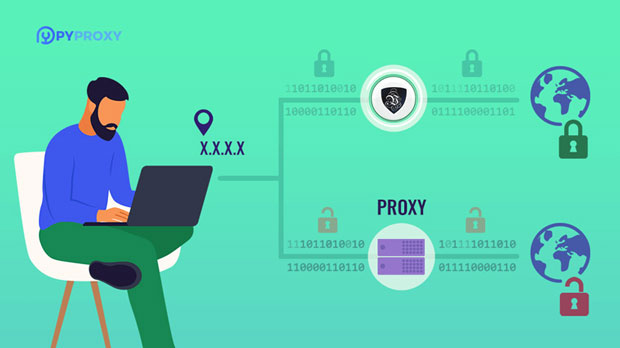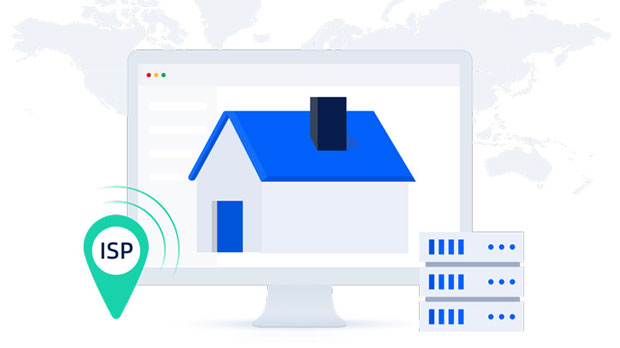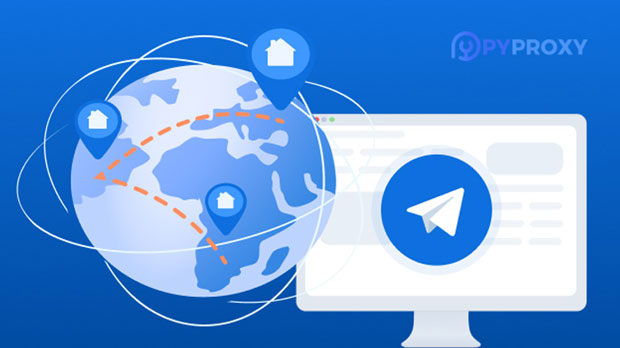The increasing need for online privacy and anonymity has led many internet users to turn to free proxy services when accessing sensitive websites. A proxy server acts as an intermediary between the user’s device and the destination website, masking the user's IP address and location. However, a critical question arises: when using free proxies to access sensitive sites, are users truly anonymous, or could they still be tracked? This article delves into the complexities of using free proxies, the potential risks of being traced, and the factors that influence online anonymity. The Mechanics of Free ProxiesBefore addressing whether sensitive websites can track users when accessing them via free proxies, it's important to understand how proxies work. A proxy server routes internet traffic through its own IP address, masking the user's real IP address. This process creates an illusion of anonymity, as websites receive requests from the proxy server rather than the user's device.However, free proxies have significant limitations compared to paid services. These proxies are often used by multiple users simultaneously, leading to slower speeds and less reliable connections. In addition, free proxies are typically not encrypted, meaning that the data transmitted through them is not secured. This raises the question: how secure and anonymous is the connection when accessing sensitive websites?The Risks of Being Tracked Using Free ProxiesAlthough free proxies can help mask the user's IP address, they do not guarantee complete anonymity. Several factors contribute to the potential for being tracked:1. Lack of EncryptionOne of the key drawbacks of many free proxies is the lack of encryption. Without encryption, the data exchanged between the user and the proxy server, as well as between the proxy and the destination website, is transmitted in plain text. This exposes sensitive information to potential interception by third parties, such as hackers or even the proxy provider itself. While encryption is not a foolproof defense, it adds a significant layer of protection, especially when accessing sensitive sites. Without it, the risk of being tracked or having personal information exposed increases significantly.2. Proxy Server LogsMany free proxy services, particularly those that offer limited anonymity, log user activity. These logs may include the websites visited, the user's IP address (though masked), and the duration of the session. Such information can be stored and potentially accessed by the proxy provider, law enforcement, or other parties under certain circumstances. If the proxy service is required to comply with local laws or regulations, it might be compelled to share the data with authorities or third parties, which could lead to the tracking of the user. Even if the proxy does not explicitly log activity, a lack of trustworthiness and transparency means there’s always a possibility of monitoring.3. Browser FingerprintingEven when using a proxy, websites can still use advanced techniques to track users, including browser fingerprinting. This method collects information about the user’s device, such as screen resolution, operating system, browser type, and installed plugins, to create a unique identifier. Unlike IP addresses, which can be masked through proxies, browser fingerprints are much harder to conceal. Websites that use fingerprinting techniques can potentially track users even if they are using a proxy server, making it difficult to achieve true anonymity.4. DNS LeaksA DNS (Domain Name System) leak occurs when the user's DNS requests are sent directly to the internet service provider (ISP) instead of through the proxy server. This happens when the device or application is not properly configured to route all traffic through the proxy. As a result, the ISP can see which websites the user is accessing, even though the user is trying to hide their activity by using a proxy.While DNS leaks are more common with paid proxies and VPNs, free proxies are especially vulnerable to this issue due to their lack of robust security measures. A DNS leak could expose the user's browsing activity, allowing sensitive websites to track the user despite their use of a proxy.5. Traffic AnalysisSome websites and services use traffic analysis to identify patterns in data exchanges, even when proxies are used. By analyzing the size, timing, and frequency of data packets, advanced algorithms can sometimes detect whether a user is employing a proxy, even if the IP address is masked. This technique, known as traffic analysis, can be used by sensitive websites to identify potential users of proxies, thus potentially compromising the anonymity of the user.How Sensitive Websites Can Track UsersSensitive websites, such as financial institutions, social media platforms, and government websites, are often equipped with advanced tracking mechanisms designed to identify suspicious activities. These websites rely on multiple methods to ensure that users are who they claim to be and that their activities are legitimate.1. Cookie TrackingCookies are small pieces of data stored by websites in a user’s browser. They are commonly used for user authentication, tracking, and personalizing user experiences. While cookies are not necessarily a method of tracking the user’s real-world identity, they can still be used to track browsing behavior across different sessions.If a website places a cookie on a user’s browser, it can potentially identify that user even if they attempt to mask their identity through a proxy. In some cases, cookies may be used to link multiple sessions together, making it easier for websites to track users who switch IP addresses.2. IP Address CorrelationEven when using a proxy, websites can sometimes perform IP address correlation. For example, if the user logs into a sensitive website with one IP address, then later accesses the same website using a different IP address, the site can flag this as unusual activity. Although a proxy might obscure the original IP address, the website may still correlate activity across different sessions and detect that the same user is involved.3. Behavioral PatternsBehavioral analysis involves tracking a user’s actions on a website, such as the pages visited, the time spent on each page, and the patterns of interaction with the website’s elements. Sensitive websites often use behavioral analysis to detect irregularities or suspicious activity that could indicate fraudulent or malicious actions.Even with a proxy in place, unique behavioral patterns can still be detected, which may lead websites to track and identify the user. Conclusion: Can Free Proxies Offer True Anonymity?While free proxies can help mask your IP address, they are not foolproof in ensuring anonymity when accessing sensitive websites. The lack of encryption, proxy server logs, browser fingerprinting, DNS leaks, and advanced tracking mechanisms employed by websites all contribute to the potential for tracking.For those seeking true privacy and security while browsing sensitive sites, relying solely on free proxies may not be enough. Understanding the limitations of free proxies and considering more secure alternatives, such as paid VPN services, can help reduce the risk of being tracked. Ultimately, online privacy is a multifaceted issue, and anonymity requires more than just masking an IP address—it requires robust security measures, privacy-focused tools, and a mindful approach to browsing.
Apr 21, 2025
![arrow]()




























































